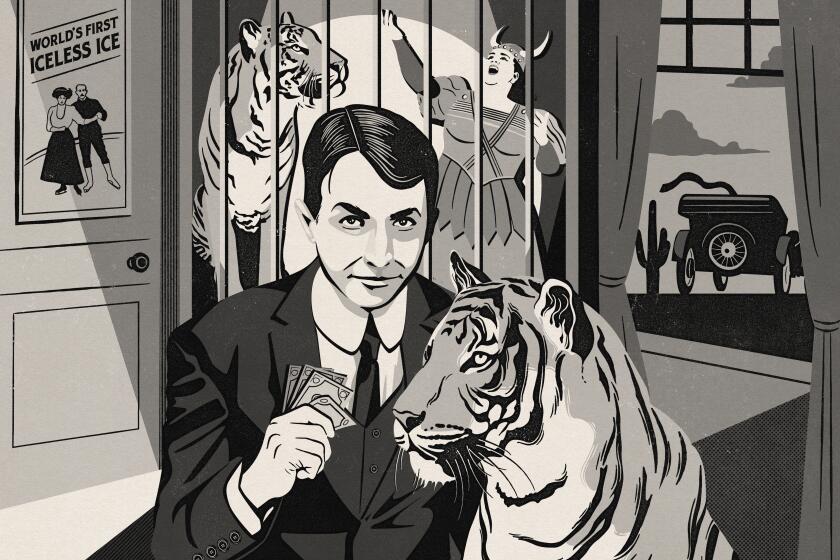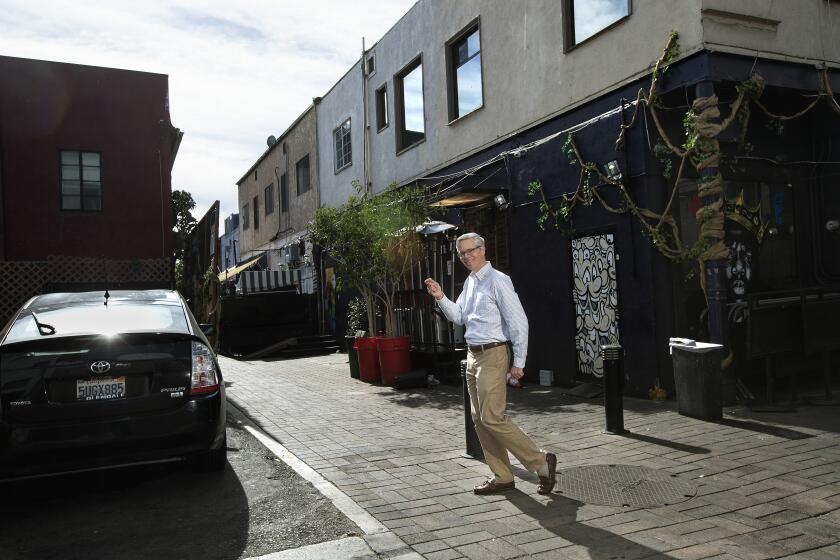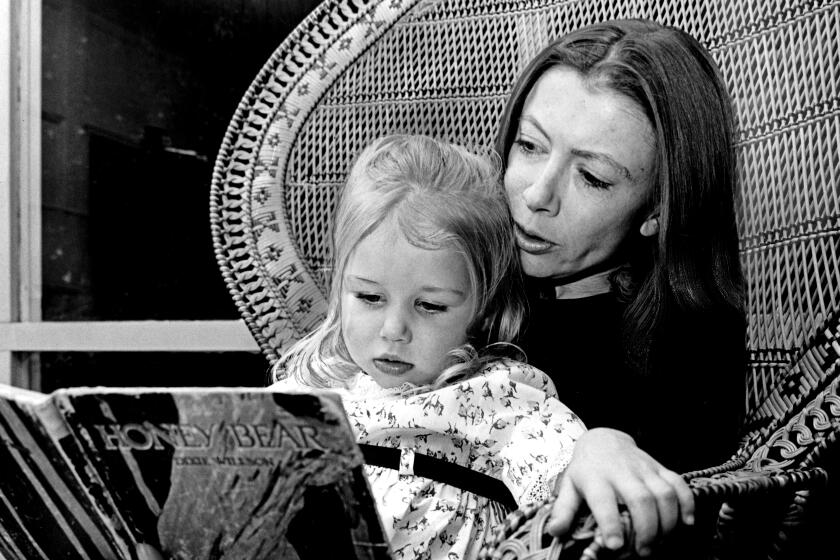Two new books prove it’s always a good time to think about Buster Keaton
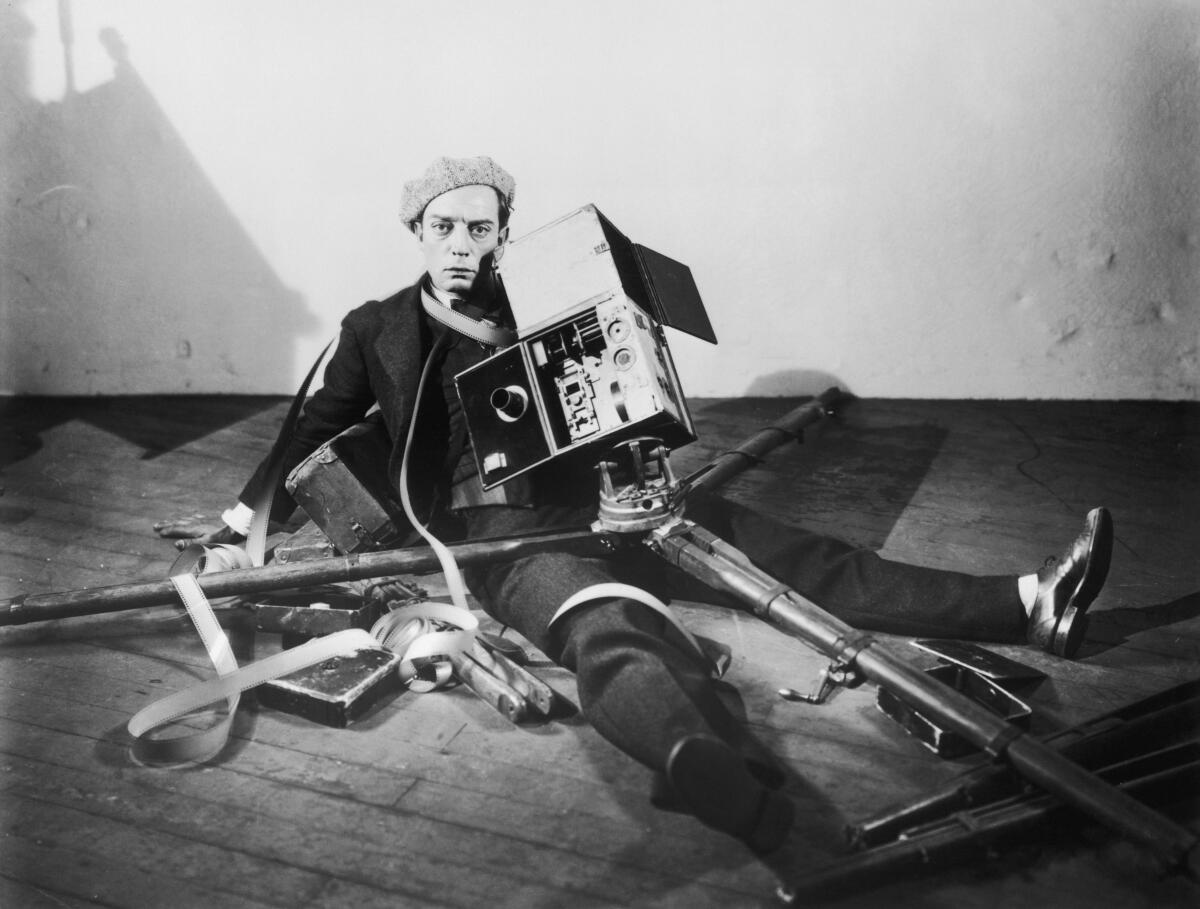
- Share via
On the Shelf
Buster Keaton Books
Buster Keaton: A Filmmaker’s Life
By James Curtis
Knopf: 832 pages, $40
Camera Man: Buster Keaton, the Dawn of Cinema, and the Invention of the Twentieth Century
By Dana Stevens
Atria: 432 page, $30
If you buy books linked on our site, The Times may earn a commission from Bookshop.org, whose fees support independent bookstores.
Woe betide the author who, whether by design or coincidence, must compete with another when their two books cover the same subject on roughly the same publication date. The inevitable double reviews might be catnip for critics, but they can force a zero-sum game for the authors: Two books enter, one survives. Fortunately, when it comes to Buster Keaton, the subject of two compelling and complementary new books, there’s plenty to go around.
The epigraph to Dana Stevens’ new book, “Camera Man: Buster Keaton, the Dawn of Cinema, and the Invention of the Twentieth Century,” is a title card from Keaton’s 1921 two-reel film “The High Sign”: “Our hero came from Nowhere — he wasn’t going Anywhere and got kicked off Somewhere.” It’s a typically self-effacing bit of Keaton lore. Although it seemed like Keaton entered cinema fully formed, he perfected his craft and his durability in a popular family vaudeville act over several years. As for going nowhere, he would soon become a lauded silent comedian; today, he is widely considered the greatest of them all.
In addition to Stevens’ incisive work of cultural criticism, there is James Curtis’ “Buster Keaton: A Filmmaker’s Life,” an 832-page biography that leaves no stone unturned. The two books work well together — one a close-up of Keaton as avatar of modernity, the other a hefty and authoritative crane shot. That bookshelves have room for both speaks to Keaton’s enduring popularity.
“I’ve not encountered, in print or even in person, anybody who is involved in the field of comedy that doesn’t have reverence for Buster Keaton,” Curtis says in a phone call.
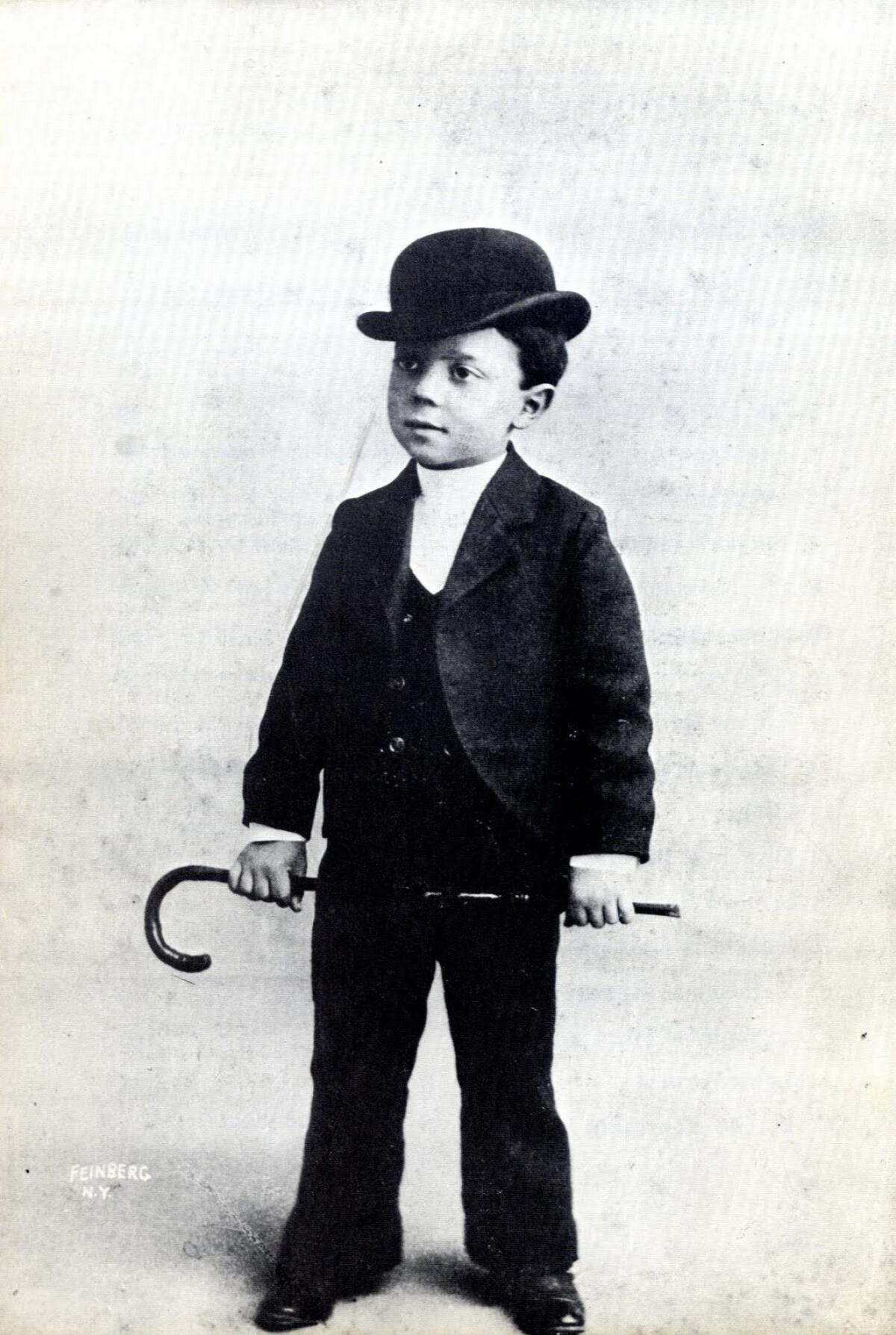
Both books tell the story of a child prodigy who learned to take a licking as part of the family act. Keaton’s father, Joe, would toss the kid around the stage like a bowling ball. By the time Buster embarked on his own independent film career, in 1920, he was ready to perfect the death-defying stunts and the underdog persona that made him a 5-foot-5 giant of ‘20s film. Pictures like “Steamboat Bill, Jr.” (1928), in which the falling facade of a house famously comes within inches of crushing Keaton, remain thrilling to this day. (You can watch the whole film on YouTube.)
Hollywood scamming is a tradition. The century-old saga of Paul Bourgeois — cinematographer, animal wrangler, con artist — shows how far back it goes.
But his triumph didn’t outlast the decade. The dawn of sound and an ill-advised, restrictive contract with MGM combined to clip his creative wings. Subsequent decades had the occasional highlight, like his performance as one of Norma Desmond’s bridge-playing “waxworks” in 1950’s “Sunset Blvd.,” but his gifts never really gained traction in the post-silent world.
To Stevens, the movie critic at Slate, Keaton — with his stone face, porkpie hat and calm acrobatics — was the ultimate 20th century man. She begins by looking back to 1895, the year Keaton was born, and spotlighting parallel figures and events: Freud’s inspiration to analyze dreams, Oscar Wilde’s conviction for “gross indecency,” Booker T. Washington’s Atlanta Compromise speech.
As Stevens writes, “It was as if the twentieth century, already in love with movement, change, and speed, were reaching back five years in time to yank the last half-decade of the comparatively pokey nineteenth ahead with it.”
Stevens realizes she might seem to be doing the same — reaching back a century to yank Keaton into contemporary culture. “It was a hundred years ago and they’re black-and-white silent movies, and we watch them now as artifacts from the past,” she says by phone. “My argument is that he was born ahead of his time and he remained ahead of his time.”
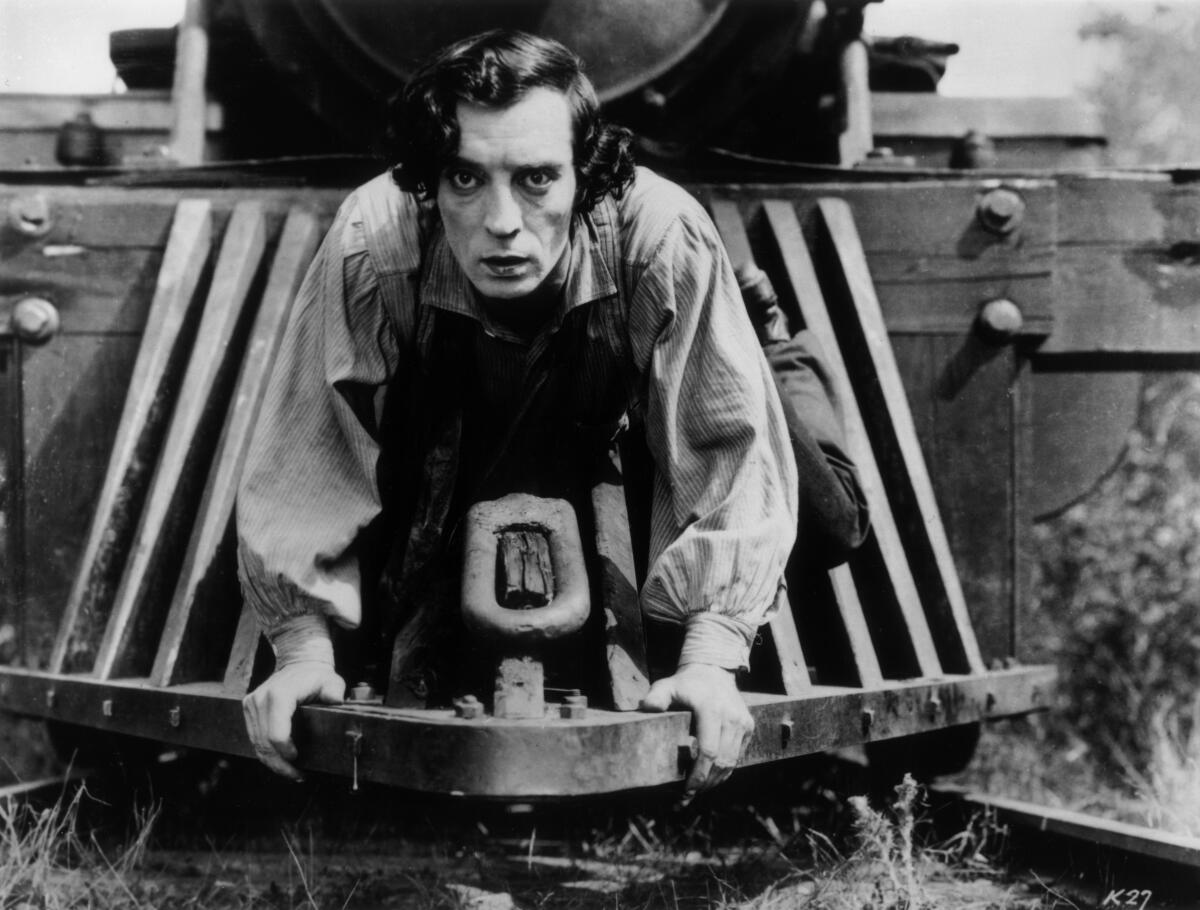
Stevens sees something both timely and timeless in some of the tensions that run through Keaton’s work. There’s the relationship between humans and technology he explores in films such as “The General,” “The Navigator” and “The Boat.” There’s the conflict between individual freedom and the demands of society in “Seven Chances” and “Cops.” “He was a modernist,” Stevens says, “like Virginia Woolf or the Surrealists or [Russian experimental filmmaker] Dziga Vertov, in that he was always reinventing the medium he worked in.”
Three new books — “Dream State,” “Hollywood Eden” and “Rock Me on the Water,” examine savvy pop-culture myth-making by and about the Golden State.
Curtis has written biographies of W.C. Fields, Spencer Tracy and Preston Sturges, among others. But his connection to Keaton started when he was a kid, watching reruns of “The Buster Keaton Show” in the early ’60s on Saturday morning television. Keaton was on TV a lot back then, with guest spots on “You Asked for It,” “The Eddie Cantor Comedy Theater,” “The Twilight Zone” and other programs. “God knows the TV series wasn’t reflective of his best work at all,” Curtis says. “It was only later I actually got to see his really good stuff. And then I was really smitten. The fact that he never smiled really appealed to me.”
For Curtis, what set Keaton apart from the other silent comedy greats — Charlie Chaplin and Harold Lloyd — were his instincts as a director.
“Buster saw the whole frame, and he saw the whole point of the frame,” Curtis says. “He also knew instinctively that with the motion picture camera, you could do things that you couldn’t do onstage. You can take the camera anywhere and shoot anything you want with it. He was well-traveled enough and insightful enough to know that was a big deal. And I think that informed a lot of what he did.”
Both authors caution against reading too much into the bang-bang timing of their books’ release dates (Stevens lands on shelves Jan. 25, Curtis on Feb. 15). Both books were supposed to publish in 2020, but the COVID-19 pandemic pushed them back. There’s no grand confluence that made early 2022 the season of Keaton. “I don’t want to put the two books into competition with each other in a false way or encroach on the turf of someone who’s doing archival work like he’s doing,” Stevens says. “I’m not trying to break new stories about Buster Keaton. I’m trying to interpret.”
In other words, you don’t have to choose. It is the season of Keaton, and not for any particular reason but because it’s always the right time to revisit an artist who — though sidelined by a changing world — made that world the subject of work that would never go out of style.
Vognar is a freelance writer based in Houston.
In an unnamed and unheralded alley just south of Hollywood Boulevard, Charlie Chaplin, Harold Lloyd and Buster Keaton filmed scenes in some of their greatest films. It deserves recognition.
More to Read
Sign up for our Book Club newsletter
Get the latest news, events and more from the Los Angeles Times Book Club, and help us get L.A. reading and talking.
You may occasionally receive promotional content from the Los Angeles Times.
